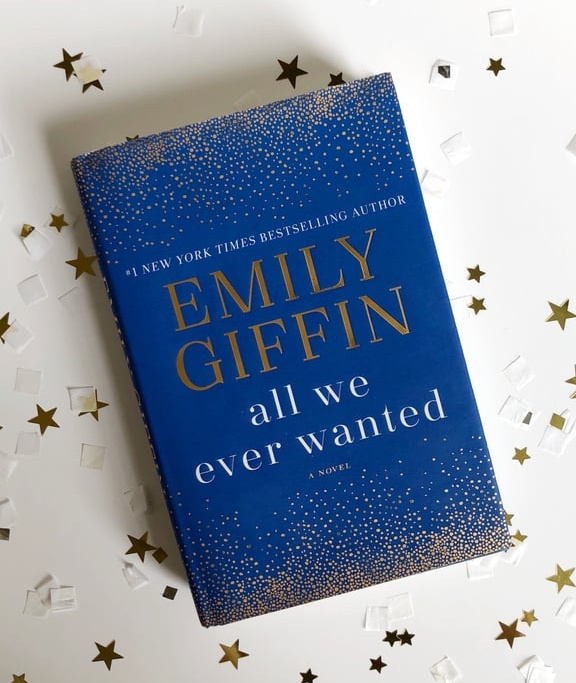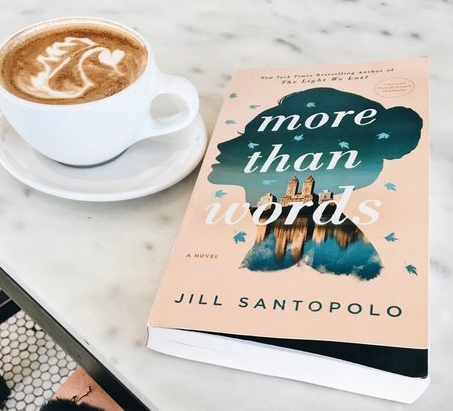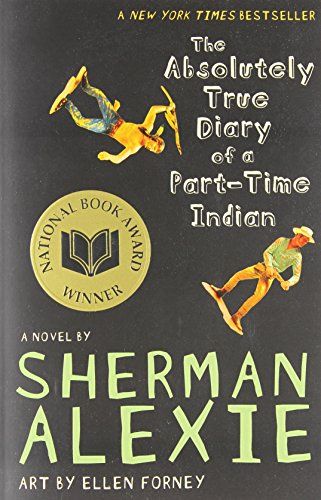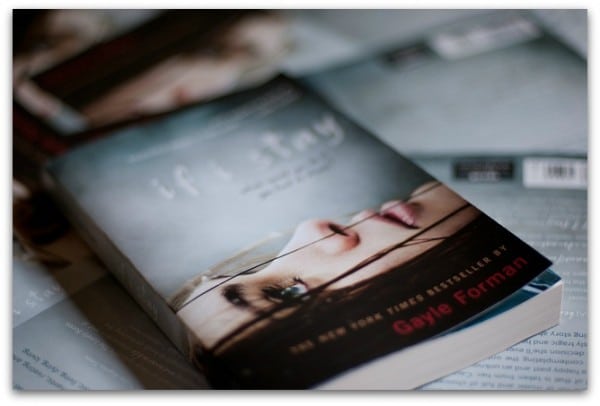Latino Inclusivity in Popular Young Adult Novels

Putting some thought into the young adult novels read during younger years or in recent times, one may remember some prominent ones such as The Sisterhood of the Traveling Pants, The Harry Potter Series, The Fault In Our Stars, or A Wrinkle In Time. All of these novels have stood out in their own way. However, how many of these books’ characters can individuals with Latino/Hispanic roots identify themselves with? A small number really, since there is a very small number of Latino/Hispanic characters, if any, in these novels. “Latino” and “Hispanic” are two different takes on being a Spanish-speaker; “Latino” usually means a person with Latin American ancestry, while “Hispanic” relates to people only from Latin America, Spain, or the Caribbean. For this article, “Latino” will be used, to refer to individuals with Latin American heritage, who need novel characters they can easily connect with the most in their multi-cultural world. The following books’ stories will be discussed, so be aware of any spoilers ahead for: All We Ever Wanted by Emily Giffin, More Than Words by Jill Santopolo, The Absolutely True Diary of a Part-Time Indian by Sherman Alexie, Look For Me by Lisa Gardner, and If I Stay by Gayle Forman.
There has been a small rise in the number of main characters who have Latino roots in recent novels, specifically, young adult novels. However, more is still needed, especially for the upcoming generations who are multi-cultural. Many novels have misrepresented Latinos through stereotypes. As stated in the New York Times article “For Latino Young Readers, An Image is Missing”, 1 most books youth encounter have main characters who are white. Even an eight-year old child commented: “I see a lot of people that don’t have a lot of color.” Reinforced in the mentioned article, short books such as Dora The Explorer do not count as representation. Short stories do not play out long enough for necessary details. In addition, while Dora The Explorer may introduce brief insights into Latino culture and some Spanish vocabulary, it needs more time and story. There is a strong need for more books with Latino protagonists to make their way into youth’s lives, since “what is available is not finding its way into classrooms”. Schools are the fastest and closest gateway for children to find literature to learn from and connect with.
Lists of suggested books for youth literature have some written by African American authors about black characters, such as Things Fall Apart by Chinua Achebe, but feature very few Latino writers or with a Latino main character. It would be wise to include proper Latino representations, other than the stereotypical character traits they are widely given in literature.

Emily Giffin’s All We Ever Wanted: Appropriate Latino Representation
One of the most recent young adult novels to include a Latina’s point-of-view has been Emily Giffin’s All We Ever Wanted 2. In the story, we meet four main protagonists; Nina Browning, Tom Volpe, Lyla Volpe (Tom’s daughter), and Finch Browning (Nina’s son). Giffin does what not many non-Latina authors do; she immerses us into the point-of-view of Lyla, whom is of Latino heritage (Brazil, specifically). In the novel, Lyla is a high school freshman, who has a crush on a high school senior named Finch. Lyla and Finch could not be more different. Lyla has a humble background; a single father who cares for her in a moderate household. Finch was born into wealth through his father, Kirk Browning, and his mother, Nina, comes from a humble background, as well as a dark past.
One night, Finch abuses his economically high-status on many different levels; personally, emotionally, and physically. He and his friend, Beau, take an inappropriate picture of Lyla and post it on Snapchat. Lyla was sleeping on his bed, having had too many drinks, part of her breast showing, with Uno card games nearby, and the caption read “Looks like she got her green card” (Giffin, 25). It was a very discriminating, racist, and abusive thing to post online without consent of the individual. This is something a lot of young adults may relate to, with the permanent stay of social media in our everyday lives now. Before, the public did not have many young adult novels published with social media as a helping tool for the story’s main plot. Now, Giffin has helped break that barrier on what young teens today may be prey to. Furthermore, she created Lyla with Brazilian heritage coming from Lyla’s mother, Beatriz.
Even though we have a main character, Lyla, with Latino roots, her mother’s story still fits into the Latino and woman stereotypes. Beatriz is over-sexualized and an alcoholic. The first day she met Tom Volpe, she asked him “Do you make love the way you dance?” (Giffin, 37). Once Lyla was born, things changed for the worse. Tom described how he “slowly began to see that Beatriz’s sole version of fun had become partying” (Giffin, 39). She became jobless due to excessive use of alcohol. It was also suggested that she cheated on Tom. Eventually, she abandoned Lyla with her father.

She was given a narcissistic personality, and thought only about herself. As supported in Portrayals of Latino in Young Adult Fiction by Jennifer Cole 3, Latina mothers in Latino literature are usually depicted as mothers with “traits that hurt their relationships with their children”. The public needs more Latino characters with positive character traits, that may be passed down in the minds of young adult readers. As stated by Cole, when stereotypes become consistent in the minds of readers, they become believable. Young adults, whether reading a novel for school or their own enjoyment, should have access to material that inspires them to break away from negative stereotypes. However, there can be some who are able to identify with Lyla’s family situation, since it is true that not every family has both mother and father present. It is a matter of increasing positive light on the Latina mother and woman in literature.
At first, there was doubt whether or not Finch had taken the photo and uploaded it online. Walter, Lyla and Finch’s head of school, had gotten wind of the photo circulation and ordered a meeting with both families. It is a common theme in literature that Caucasian people are usually wealthy. Kirk Browning tried getting Finch off the hook with director Walter by offering a huge amount of money as a “donation” to the school. Kirk only cared for his public image and, unfortunately, reinforced this in his son by almost begging for charges to be laid off because it would ruin Finch’s chances of getting accepted to Princeton University. Kirk even asked whether Lyla was a minority, horribly demonstrating that he could not care less about a woman’s personal well-being. Kirk clearly did not see anything wrong with Finch’s actions.

Then, Kirk Browning and Tom Volpe have a private meeting. In the meeting, Kirk tried reasoning with Tom through money. Kirk tells Tom his son is truly sorry for what he did to Lyla, but readers can see the cruelty of this scene; money cannot buy Lyla’s reputation and respect. Moreover, it should be Finch apologizing in person, not his father for him. Tom, with dignity, proceeds with charges and hopes the school will judge Finch with the severity of his actions. Lyla is being attacked by others, some calling her a “sl*t” and others stating she asked for it by drinking. This is representative of the “blame-the-victim” fallacy. As supported in Psychology Today 4, author David B. Feldman states that the “tendency to blame the victim may originate, paradoxically, in a deep need to believe that the world is a good and just place.” However, the most common form of blaming the victim “undoubtedly originates from ignorance, meanness, or a smug sense of superiority”. It is clear that Tom, having already experienced hardships, did not immediately blame Lyla for the photograph being taken. Kirk, however, as well as other classmates, blamed Lyla, showing a lack of intelligence and common sense at how other factors played a role in Lyla’s situation.
As the story continued, Finch had said it was his “crazy” girlfriend, Polly, whom he had chosen to broke up with to be with Lyla, whom had posted the photo. Finch claimed Polly posted it because she was jealous of Lyla. Finch even had the audacity to tell Lyla of Polly’s current mental health issues. Finch stated,
“I wasn’t the one who took that photo of you. I wasn’t the one who wrote that caption. And I wasn’t the one who sent it to my friends…[Polly] took it because she thought you and I were talking…texting…because of the way we were looking at each other [the day of the party]…let’s just say Polly has a lot of issues…” (Giffin, 169).
Lyla then wonders if the rumors about Polly’s eating disorders and cutting issues were true. One of the best things Emily Giffin deserves praise for is how she wrote a character with a disorder who was not a minority. Eventually, Finch and Lyla begin dating, with Lyla choosing to believe that Finch was innocent (she has had a huge crush on him since she began school) and it had indeed been Polly. The worst was yet to come for Lyla.

[SPOILER AHEAD] As the story moves forward, readers learn that Finch really did post the photo of Lyla on SnapChat. Finch was too good to be true, helping deviate from the typical story where main characters are not flawed. Finch tried framing Polly for the photograph, as well as taking advantage of a time Polly called Lyla a “sl*t”, and chose to paint that word on Lyla’s front porch (the nerve). Lyla received a text message from Polly, stating:
“Dear Lyla, I am so sorry that I called you a sl*t. It was a really ugly thing to say, and I actually don’t think that about you…I did NOT take that picture of you. It was Finch and Beau. And I have proof. I also have something else really big to tell you…I’m desperate and scared…” (Giffin, 304).
Soon after, Polly shows Lyla the truth of what happened the night of the party; a photo shows Lyla on Beau’s bed with the male genital organ close-up on her face, almost touching her lips. Lyla knows who it belongs to, Finch. Polly then confesses how she snuck on Finch’s cell phone and found it, along with other photos of him with other girls, and sex videos Finch had told her he deleted. It is a horrible reality Lyla then faces.
Emily Giffin successfully placed two young women from both a high and low-socio economic status in a horrible situation, instead of just placing Lyla, the minority, under the microscope. This is an excellent example of how no matter where you are from or what your skin color is, you may face a horrible and an unjust experience. Moreover, Giffin portrays Finch, a high-standing student, coming from a rich background with Caucasian heritage, the worst character traits, which in real life is possible. She did not give Lyla, a Latina, these traits. According to Jennifer Cole in “Portrayal of Latinos in Young Adult Fiction”:
“four out of sixteen books [with Latino main characters in a selected classroom], showed characteristics that portrayed a negative reputation. For example, [characters] failed academically, participated in gang activity, experimented with drugs and/or alcohol, and committed thefts”.
Giffin has shown one the fairest youth representations in modern young adult literature.
It is common knowledge that Latinos tend to get the very brutal stories when it comes to publishing. Giffin is one of the few authors who manages to get a sense of what it means when a Latino character is discriminated by others, even when Giffin is not Latina herself. There are not many well-known authors who include Latino characters in their novels the way Giffin did. While it would have broken even more barriers to have had Lyla as a rich Latina, All We Ever Wanted successfully immerses the reader into a diverse world.
More Than Words By Jill Santopolo: More Latino Culture Needed

Another novel that has attempted to integrate Latino culture is Jill Santopolo’s More Than Words 5. In the story, the protagonist, Nina Gregory, comes from “old money” through her father, Joseph Gregory. She has been dating long-time boyfriend named Tim Calder, but has her heart set on her boss, Rafael O’Connor Ruiz. While the novel integrates some Spanish vocabulary, it still has a lot to build for bigger Latino representation.
When Nina is remembering a childhood memory, she mentions how “her dad had named the [family bar] Los Tortolitos, Spanish for the lovebirds, something her parents had been called in the Spanish press…” (Santopolo, 32). Santopolo continues to include Spanish words here and there, such as describing how Nina’s mother had been a Spanish teacher, and “urged [Nina] to answer “en español” (Santopolo, 36). However, the reader does not get any longer sentences in Spanish. Later on, Nina describes how her mother would combine Spanish words, such as “inteligente” (intelligent) and “linda” (beautiful) to nickname her “intelinda”. (Santopolo, 69). Santopolo delivers some Spanish vocabulary to the reader, but it is not enough showcasing of the Spanish language. It would have been nice for her to have added a bit more of Nina’s mother’s cultural customs, and for her to be alive in the story.
Nina was began her story believing her best friend since childhood, Tim, but that changes completely when [SPOILER AHEAD] she finally accepts what she feels for Rafael O’Connor Ruiz. While Rafael may be a Latino character, he is not initially given room to showcase his Cuban roots throughout the story. He even adds a bit of Spanish dialogue to conversations, such as wishing Nina “buena suerte” (good luck) (Santopolo, 295). He is, however, described as someone with dark brown eyes and very handsome, charismatic enough to attract a large audience. In fact, he is running for mayor of New York City. It is common knowledge that there Latinos are usually portrayed as having low-income. As supported in “Portrayal of Latinos in Young Adult Fiction” by Jennifer Cole, there are many stories with Latino characters that had aspirations to get out of their low-status. Sadly, none of characters in the books she mention gain those aspirations successfully.
This is a strong contrast to Rafael, who manages to win the campaign by choosing to show both sides of his family, English and Spanish, to the public. He admits that his whole life he has
“been a chameleon. [He] can be whoever people want [him] to be. Talk about [his] family in Ireland, or [his] family in Cuba. Pepper [his] conversations with Spanish, switch into it completely, or pretend those words aren’t in [his] mind at all. [He] can be the kid who grew up in Queens sharing a bedroom with [his] sister and brother, or the one who got taken out to the fanciest restaurants in New York City when [he] was a summer associate at Sullivan and Cromwell” (Santopolo, 217).
Rafael chose to showcase his real, imperfect self to the people. He decided to share his experience of having an imperfect family (e.g., having a cousin who went to prison). Rafael’s character is a nice breakthrough for Latino readers because he is easy to connect with, demonstrating Latinos can be successful and yet have difficulties in life simultaneously. Rafael was real and broke apart from being another stereotypical character.
There is still room for growth in Santopolo’s and other authors’ books showcasing Latino protagonists.
Other Young Adult Novels: Latino Stereotypes Must Be Diminished

Sherman Alexie’s The Absolutely True Diary of a Part-Time Indian 6 has been widely acclaimed for its portrayal of bi-cultural existence. The story goes with Arnold Spirit Jr., who pursues his ambitions to be bigger than thought possible by going to an elite public high school, despite being the only one with Indian heritage, besides the school’s mascot. Even though the young adult novel has faced backlash for its “cultural insensitivity”, Alexie defends by stating; “I don’t write to protect [youth]. It’s far too late for that. I write to give them weapons–in the form of words and ideas-that will help them fight their monsters.” 7 This novel indirectly touches on stereotypes Latinos face in real life, which is vital for everyone to learn from.
Arnold does not have a good start of the school year. He is told by one of his teachers, Mr. P., that teachers are supposed to teach them by killing “the Indian to save the child…[teachers] were supposed to make [Indian students] give up being Indian. [Their] songs and stories and language and dancing. Everything…[They] were trying to kill Indian culture” (Sherman, 35). This, while being part of a fictional book, does reflect the true story of what many youth are conflicted with. It is common knowledge that in the United States, there are Latinos who face backlash for speaking in Spanish, both physically and verbally. According to Suzanne Gamboa in “Young Latinos: Born in the U.S.A., Carving Their Own Identity”, many multi-cultural youth have to juggle with their identity, she says, “like other population waves throughout the country’s history, these young bicultural Americans are coming of age enmeshed in their Latino and American worlds and trying to carve out a place for themselves in both of them and between”. Gamboa presents a case where a young teenage girl testifies how her own father pressures her to be more American, while her mother argues that it is disrespectful not to talk to her relatives in Spanish. 8 It is key to let youth flourish the way they want to flourish, or else they grow up without a sense of purpose, confused on what actions they should take based on their stereotypes, rather than their capabilities, which can be infinite.
Moreover, the thriller mystery novel Look For Me 9 by Lisa Gardner helps add up, unintentionally, to the bad stereotypes too often placed about Latinos. In the novel, the mystery revolves around the protagonist, Roxanna Baez, whom everyone is trying to figure out if she is a victim or dangerous enemy. While trying to uncover the mystery, Detective D.D. Warren and Flora Dane retrace Roxanna’s past. In a meeting with Roxanna’s high school guidance counselor, they are told that:
“[The school has] this group of Hispanic girls. [We’ve] heard whispers they’re a gang. They all have beauty marks on their cheeks and a penchant for ripped-up jeans. According to the rumor mill, Roxy’s sister, Lola, has already joined the middle school group. Now, Roxy’s under pressure from the high school girls…(Gardner, 97).
This coincides with the classic, inappropriate symbol of only the Hispanic community being tied to gangs. It is common knowledge that other cultures have these kind of violent groups within them as well, and it would have been great to see another ethnic group being given the role of having a gang within them, other than Latinos. Hence, new novels need more positive role models that Latinos may follow or look up to.

Gayle Forman’s If I Stay 10 novel is widely acclaimed for the way it is beautifully written in the main character’s point of view, Mia. However, there is a discriminating moment in the novel; Mia and her boyfriend, Adam, are trying to save their relationship by suggesting places they may visit, offering restaurant names such as “Japanese Gardens” and “Beau Thai”. Then, Adam states, “…but we can go out during the week somewhere. Around here. To the Mexican place?”, to which Mia answers, “Sure. The Mexican place” (Forman, 203). While this may not be central to the story’s plot, it would have been wise to give the restaurant a proper name.

There is a small number of positive, memorable Latino characters in young adult novels. With the rise of judgement around the world, it is more important than ever before that we properly represent each ethnicity. The upcoming generations need someone to look up in literature, increasing their ability to see beyond stereotypes.
Giffin’s All We Ever Wanted gave us a diverse world where anyone can have both good and bad character traits, while Santopolo’s More Than Words gave us a Latino who was succeeding, even with troubled family members. Alexie’s The Absolutely True Diary of a Part-Time Indian provided light into what it is like to grow up and desperately try to break away from what people tell you you are meant to be. It is crucial to remember that it is not only Latino’s who may be involved in unwanted activity, as shown in Look For Me by Lisa Gardner, and that every cultural cuisine deserves a full, proper name, and should not be given any generalities, as read in If I Stay by Gayle Forman. It is vital to speak out that no matter what Latino heritage one carries. There are positive Latino role models within a book’s pages whom one may admire and triumph with as she/he reads along.
Works Cited
- Motoko, Rich. “For Latino Young Readers, An Image Is Missing.” The New York Times. 4 Dec. 2008. Print. ↩
- Giffin, Emily. All We Ever Wanted. New York. Ballantine Books. 2018. Print. ↩
- Cole, Jennifer. Portrayals of Latino in Young Adult Fiction. 2013. Graduate Research Papers. 20. Print. ↩
- Feldman, David. “Why Do People Blame The Victim?”. Psychology Today. 2 Mar. 2018. Print. ↩
- Santopolo, Jill. More Than Words. New York. G.P. Putnam. 2019. Print. ↩
- Alexie, Sherman. The Absolutely True Diary of a Part-Time Indian. New York. Little, Brown, and Company. 2007. Print. ↩
- Sparks, Angela. “Resisting First Nations Stereotypes in banned YA Novel The Absolutely True Diary of a Part Time Indian”. U.S. Studies Online. 2 Dec. 2015. ↩
- Gamboa, Suzanne. Young Latinos: Born in the U.S.A., Carving Their Own Identity”. Generation Latino, NBC News. 14 Sept. 2018. Print. ↩
- Gardner, Lisa. Look For Me. New York. Dutton. 2017. ↩
- Forman, Gayle. If I Stay. New York. Speak. 2009. ↩
What do you think? Leave a comment.











If I Stay was emotional and I loved the many diverse characters. But in the end I grew impatient with the main characters indecision. I wanted her, and this novel really, to come to a point.
I understand your point of view, it was frustrating that Mia could not come to a decision immediately. Yet, one cannot easily imagine the state she was in, which makes “If I Stay” a very well-written novel.
Blasting post, shared with friends. One of the things that bothered me with The Light We Lost was the way that Santopolo wrote the character of the “brutish husband” who became so unbearable that Lucy had to leave him. I had a similar issue with More Than Words. But I loved all the other novels you covered here.
I loved The Light We Lost, it was one of my favorite reads of last year, so I was excited to read More Than Words. And although I did enjoy this book, it didn’t have the emotional impact and complexity of The Light We Lost.
Yes! I’m glad to hear it was not just me, haha. I also didn’t feel the same emotional roller coaster with “More Than Words” as I did with “The Light We Lost”.
Thank you so much, Whitney, for your compliment and love hearing you shared it with friends!
I agree the way Santopolo wrote both male, married characters in a very similar fashion. Hopefully she strays away from that formula in her next novel!
Thank you for covering this topic. I could understand how Lyla felt in All We Ever Wanted when people were making a big deal over an incident that Finch got her involved in by making a stupid, drunk decision. I could see (some of) the adults’ side of it too, especially now that I’m a mother of two boys and a girl. It also made me, in hindsight, appreciate what my teacher was trying to do, even though he should have just pulled me aside to ask about it first. And my situation (a boy touching my hair) was far less extreme than what Lyla got involved in.
I had a hard time connecting with Lyla. Not victim blaming here but she wasn’t as “pure” as made out to be. I liked the story but felt the ending was lacking.
This is what I meant by proper Latino representation. It is so important for more positive traits in Latino characters, because they tend to be written with certain “flaws”, such as overdrinking (e.g., Lyla).
Very sorry to hear that happened to you. I read this book in less than a day… It was fantastic! Definitely different from her other books. She did a great job painting the characters, their feelings and reactions, and each situation. I spent the whole book wondering what actually happened that night (I guessed wrong).
Great article with a great message. We need more Latinos in media in general.
Yes! Thank you and may this be heard worldwide.
Emily Giffin had done a marvellous job researching some of the topics covered in the story!
I had a really tough time following this story. I did not connect with the characters or the story line for that matter.
I actually liked this more than I thought I would. Also, following Emily Giffin on Instagram and seeing how political she can get, I thought it would be more of a lecture than a story. But, it was really good… a fast read.
Giffin deserves great praise! Glad to see there are others who enjoyed her story as much as I!
I would love to read more by this author. It is really so much more than women fiction I really will remember how diverse the book was.
Giffin at her page-turning best!
Reading this had the same feeling I get when I watch soap operas.
I wanted to scream at Lyla so much through that book. She frustrated me like my own 16 year old daughter! 🙂 But you rooted for her and she was amazing and strong. I was so happy how it ended up for her.
Well, Lyla is a frustrating teenager (show me one that’s not).
It was wonderful seeing Lyla overcome her troubles, which is a great example for young readers to follow; one may always move forward in a positive way after many obstacles. Latinos need more positive role models such as this.
This is a great article! I think the intersectionality within the Latinx community is immense and there is still a lot of work to do in order to become an inclusive and equitable society.
While I haven’t picked up a good YA book in a while, I have noticed that other forms of representation in mainstream culture have also attempted to bring inclusivity and intersection to their plots. Online platforms such as Netflix continue to develop plots for movies and shows that promote inclusiveness and cultural awareness with shows such as “One Day at a Time”. This show explored the lives of a Latinx family as they navigated the intersectionality of their generations, beliefs, identities, and current social issues. Even though this was a highly acclaimed show within the Latinx community, the show was discontinued due to low views according to Netflix. This was followed by backlash on social media, as Netflix had recently invested millions of dollars to continue to stream “Friends”. Another example of diversity in films is “Someone Great”, where Gina Rodriguez navigates the aftermath of a long-term relationship breakup with her two girlfriends. In order to promote diversity, Gina’s ex-boyfriend was black, as well as one of her best friends, while the other was a white woman. While this shows an unconventional depiction of a Latina woman, there are some instances in which hispanic cultural heritage is forced upon the viewers. Examples of this is Gina calling her friends “putitas” or wearing a “Latina af” shirt. While the representation of women from multiple backgrounds is needed, the positive and negative stereotypes attached to these women needs to be left behind. The parallel between representation in film in literature is crucial, especially as future generations of Latinx children are growing and understanding the duplicity of their identity.
Great points!
Excellent points you made! They add on to the point of this article, which is that there is a great need for proper Latino representation in literature. Also, as you said, it is also needed in film, and other forms of media. Let’s leave the negative Latino stereotypes behind.
The biggest issue I had with All We Ever Wanted–and even Lyla herself admits it–is that the characters sometimes come across as cliche.
I enjoyed this one because it wasn’t totally predictable and because I really liked the characters of Lyla and Tom.
I know what you mean; the fact that Finch was the mastermind of the story’s plot was shocking enough that it broke away from the cliche story where the poor Latina young woman goes off to live happily ever after with the rich man.
Nice article. In All We Ever Wanted, I loved how the story unfolded, made even more powerful by having Lyla’s point of view. I found all three narrators’ performances outstanding. It felt as though they were inhabiting the skin of their characters.
Exactly! Bravo to Giffin for having us flow through the story with all main characters’ points of view.
I think it’s difficult to find any area of sympathy in the characters of More Than Words. To paraphrase my favourite TV show, Crazy Ex-Girlfriend, ‘Why should we root for someone female, straight and white?’. There’s a lot made of her connection to Spain and there is a Hispanic character in there (Irish-Cuban, a combination I’ve never really seen before), but I feel no sympathy for a rich girl who has a parent die. Because she recovers. She continues on. There’s nothing at stake for her. Later on, there’s an addition of something small towards the end of the book that suggests there was more going on with her father’s company than meets the eye, but it doesn’t have the impact it should.
It was also hard for me to become attached to Nina because her story is not a very common one, at least not that I have heard of. She did not seem to go through hardships that young adults go through in general. Her story seemed to be more about the experience of an older person.
The Absolutely True Diary of a Part-Time Indian is a satisfying story with a strong, teenage voice. I feel like I would’ve loved and cherished this book if I had read it as a young adult. As a now (pretend) adult, I still found it sweet, uplifting, and oftentimes shocking
I empathized and sympathized with Junior straight away. His voice is so REAL.
More Than Words was a huge bomb for me.
Throughout its entirety, I kept hoping for the story to gain strength and lose the flimsy exterior it takes on from the start but it just never came for me. Nina was unrelatable and came off as superficial, sheltered, and unrealistic.
I hated how she had little to no personal strength and pretty much no growth throughout the entire novel. She was always relying on people around her to build her up and support her decisions, no matter how wrong or stupid they were and, even more shocking, they did so!
To be fair to Nina’s story, while her story was not a relatable one that the common person may connect with easily, it did represent a reality that many do not admit easily; everyone needs help from others sometimes.
It was an okay novel, but did not manage to reach into my heart the way the author intended.
I agree. It was okay. Not as good as The Light We Lost.
Sherman Alexie is witty, and his work made me laugh often.
Look For Me reminded me a bit of Pretty Girls because of the pacing.
What a disappointing novel. I usually really enjoy Lisa Gardner’s work, but there were too many things in this book that fell short.
That was a good read. Thank you. I’m a simple man – I see the word ‘library’ and I like!
Thank you, Amyus! Great to hear this! You’re welcome.
A late addendum. I’d just like to add that I think your main image for this article is perfect. A youngster reaching for a book on the top most shelf is an excellent metaphor for extending the range of knowledge.
Thank you lots, Amycus! It is never too late to add a comment in my opinion 🙂 Yes, it is vital to help a youngster expand their mind starting at an early age, which will set them into motion to continue reaching for more. One never stops learning.
TATDPI is an achingly beautiful celebration of life that any adult would do well to read and any kid can relate to. It gets at the painful heart of being an adolescent, told in Alexie’s irreverent, dead-true voice.
YES! There is no way for me to describe the power of this little book.
In More Than Words, I love her writing style, it is really immersive and gives you such a good background so you can really imagine yourself in the story. But, I had a really hard time relating to and empathizing with the main character, I just didn’t really like her.
I would argue that Nina’s character would have been far more likeable/memorable if Santopolo would have written her with a Latino background instead. It may have made for a more interesting story to read about a rich Latina women paving her way through it all.
All we evr wanted is one of my fav books. Loved how you feel empathy for Finch’s mother who realises her son if guilty, should be punished for his stupidity and how she strikes up a friendship with Lyla whilst being there to support her.
Definitely makes you think, how would you feel if you’re son had taken a photo of a drunk vulnerable girl, or god forgive, it was you’re daughter, for all to see!! Would you side with you’re son even when you know he is in the wrong?
That is one of the best things about “All We Ever Wanted”, that the protagonist admits her own faults, leading to the downfall of her own son. She also makes no exceptions in judging how wrong Finch acted.
The protagonist also does everything in her power to defend Lyla, a Latina who deserved every bit of respect as any other person. Giffin does an outstanding job in her portrayal of Lyla’s character.
Blasting this article and sharing with everybody. The idea that short stories don’t count as representation because they lack the depth necessary to counteract harmful stereotypes is fascinating.
😀 Quite wonderful to hear this, thank you! Yes, short stories do not do justice to the proper representation of characters.
Generally, I feel as though there is a consistent lack of racial diversity in literature. It is as though there is a standard image of characters and their backgrounds.
Thank you for your input! There is a definite lack of racial diversity in literature. I wanted to focus on the Latino population for this article, because they are not usually given any light. Even in movies they are represented either very little or not at all.
A Robot is not a human or a woman so it may look like a she but it is not. Robots should not be replicating the look of humans but should look like robots in my opinion.
If I Stay was a little too melodramatic for me.
How was it melodramatic for you?
Please keep in mind that the focus of the article is on the misrepresentation and lack of Latino characters in literature.
If you want to make an audience curious about a book, just put it on the “banned” list.
Haha, putting a book on the “banned” list may sure make it more enticing for readers. However, it is even more enticing seeing the lack of representation of some ethnicities, helping cause the public outcry for more.
With Sherman’s book, I am not a big reader of YA fiction, and so it took me a bit to get into the swing of it. But in the end, I adored this book,
What did you adore the most about it?
Really timely article. I feel like Emily Giffin did a wonderful job exploring challenging issues of social media, bullying, sexting, and pressure of alcohol that teens face today in society.
What I felt the story was lacking was depth and emotion to her characters.
Yes, she did! You gotta congratulate her for having a Latino main character in the story. More authors could follow her example.
More Than Words is kind of a great tribute to poetry.
I had mixed feelings on The Absolutely True Diary of a Part-Time Indian. The language and some of the sequences was somewhat raunchy for the age group.
This was a great article, thank you Yvonne T! I have to admit that I haven’t read any of the books you discuss, but it was interesting to read your views on the Latina inclusion and characterization in YA literature. This has made me reflect on other books that I’ve read and how this topic can relate to other cultures and stereotyped peoples. I agree that it’s important to show the full range of life styles, situations and characters that exist in cultures that are regularly stereotyped; after all, we’re all human and all have matching flaws along with hour matching hopes and dreams.
Reading your article has inspired me o firstly, read some of the books you discuss and reflect on the characters and there lives, and secondly to take a closer look at my own writing and and how I can creat characters that will innspire young adults to embrace cultural awesomeness and understanding into their own lives. Thank you!
I am so glad to hear this! Thank you, Monica! If I can help make a difference in how authors write out their characters, it means triumph for me and the Latino culture.
I really love your sentence, “after all, we’re all human and all have matching flaws along with our matching hopes and dreams”, because it could not be truer. There seems to be a lack of understanding the Latino culture, where many may unfairly believe that all there is to it is what popular media portrays.
This was an absolutely great read! Representation is incredibly important, loved your article!
Thank you tons for your kind words, Sebastian!
I’ll be frank. The title being a bit misleading, I was expecting to read about novels that had a well-rounded, positive inclusion of Latinos rather than some books that failed at it. That being said, it was interesting to learn about those stories who tried at inclusion but failed to make Latino representation feel authentic. Your conclusion is poignant–we do need accurate portrayals of Latinos so future, and even current readers are introduced to real people rather than stereotypes.
I appreciate your commentary – Initially I had my title as “The Lack of Latino Inclusivity in Popular Young Adult Novels”. but the editors omitted the “lack of”. I can see how the current title can be misleading. I am glad to hear you enjoyed my article, thank you! I have strong hope for future novels, that will do the Latinx community justice in literature.
Love to hear this!
Thank you!
I appreciate this article. I grew up in a Latino community as one of very few Caucasians and the Latino culture is one I feel more at home with than any other. I love finding stories that show how diverse individuals can be no matter their backgrounds because that is my reality. Though I grew up in a poor Latino community, I was the poor white girl who wore old sweaters and helped my Latina friends in our Spanish language class. I am a wannabe Latina.
Thank you for sharing! I really appreciate it. We can all relate to each other in one way or another :)!
Latinx representation is growing more and more each year. I’m reminded of the scene in “one day at a time” in which a Cuban family friend arrives in a Che Guevara t shirt and he is horrified at his mistake. All works by Julia Alvarez- ie “How the Garcia Girls lost their accents” and “in the name of Salome” we see how culture gets erased and racism does not. The aggrandizing nature of American history does not help either, for not only does it promote xenophobia (cough trump cough) it also hurts the citizens themselves. How can we call ourselves a melting pot when the only ones not melting are the ones who can’t take the heat (get it, cause caucasians burn easy). However Spanish and Latinx dramas are picking up in children’s books. We study day of the dead in school and more and more Latinx women are gaining traction in the creative community. Who doesn’t love Jane the Virgin?
I love to see Latinx representation in YA. Last year I read a book by Chicago native Erika Sanchez. She wrote a novel “I’m Not Your Perfect Mexican Daughter.” It was then translated into a play. This is something so necessary for all of us especially the Latinx community. So, I thank you for writing pieces like this.
The first book listed sounds like it is a strong, emotionally harsh story.